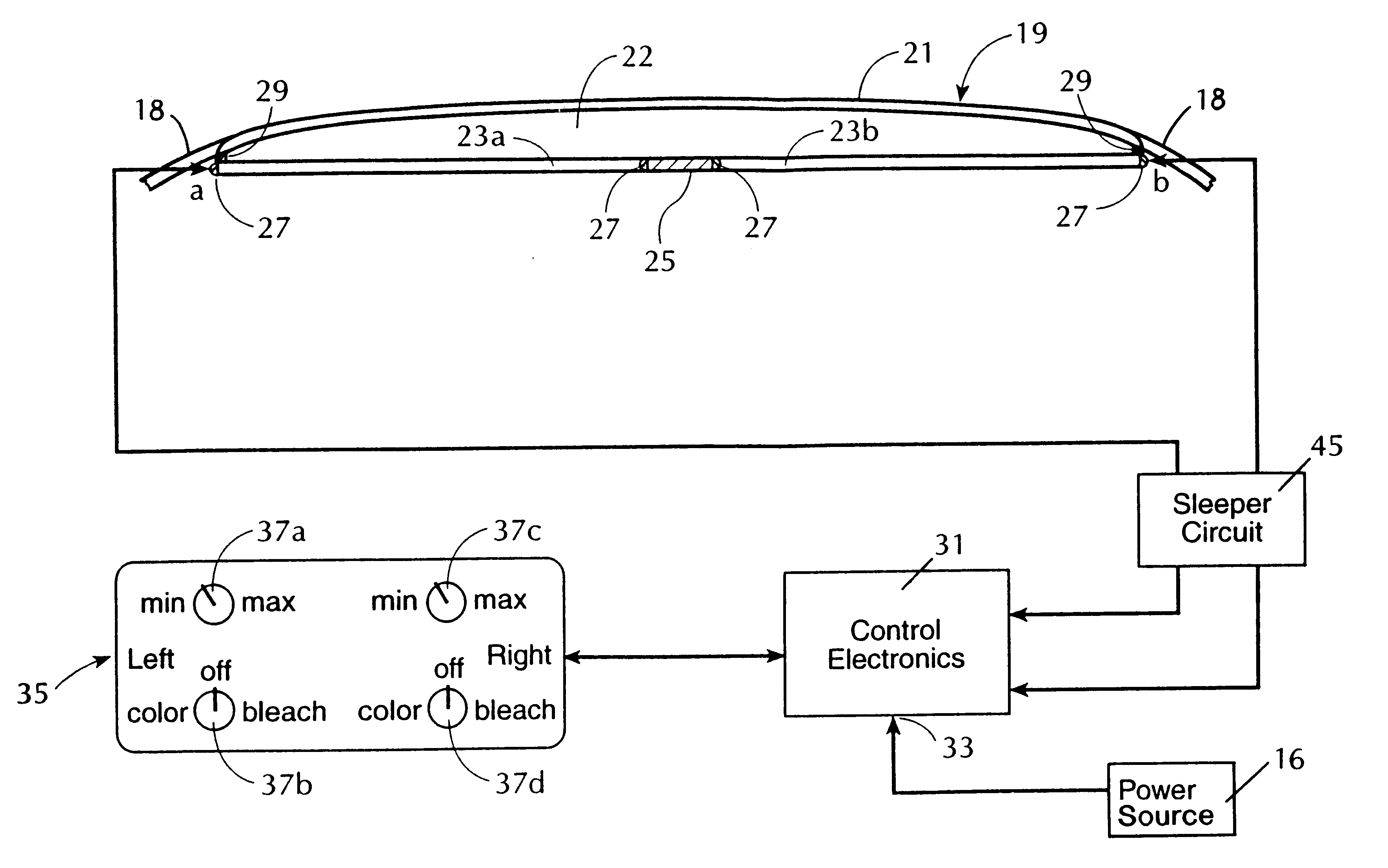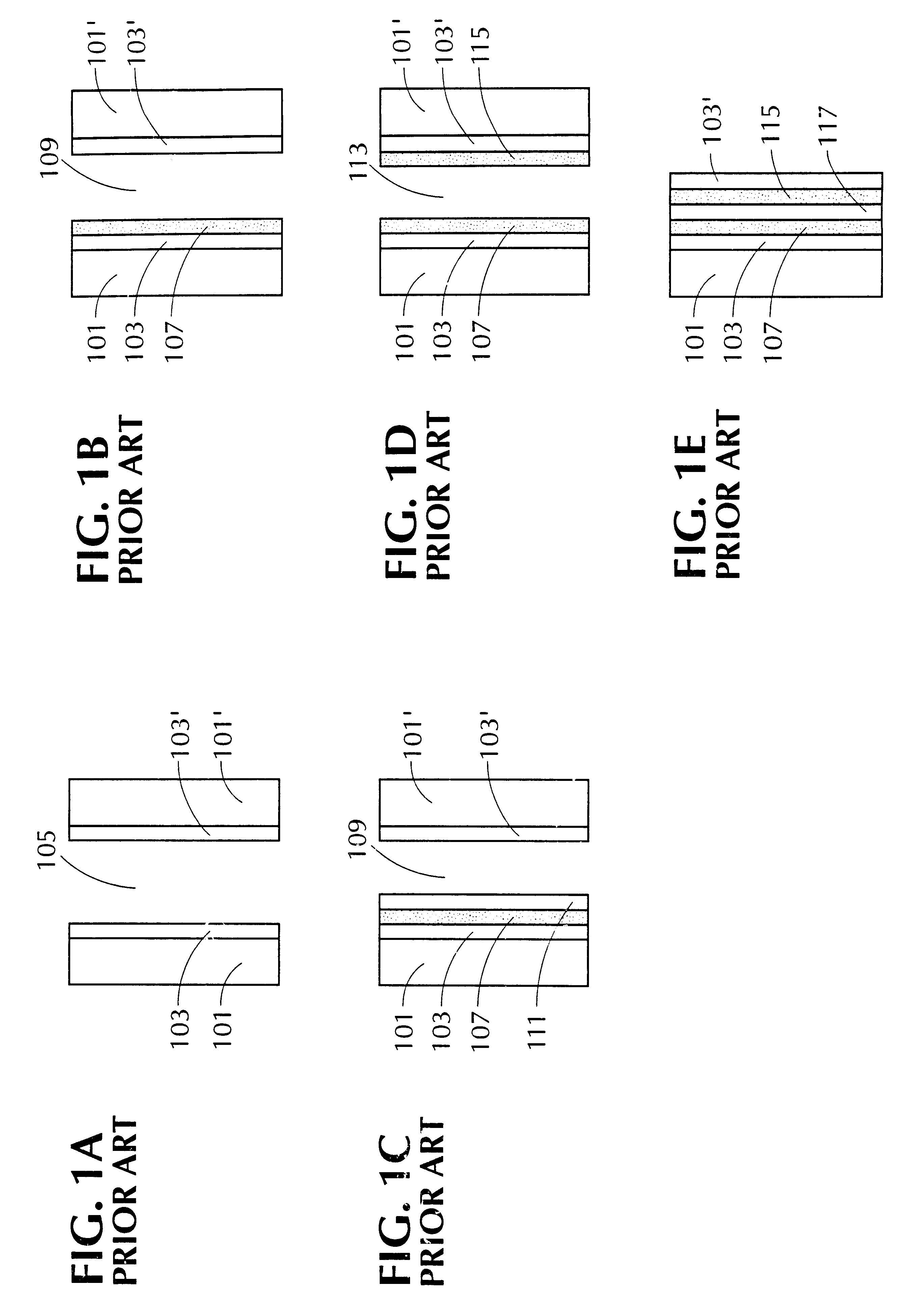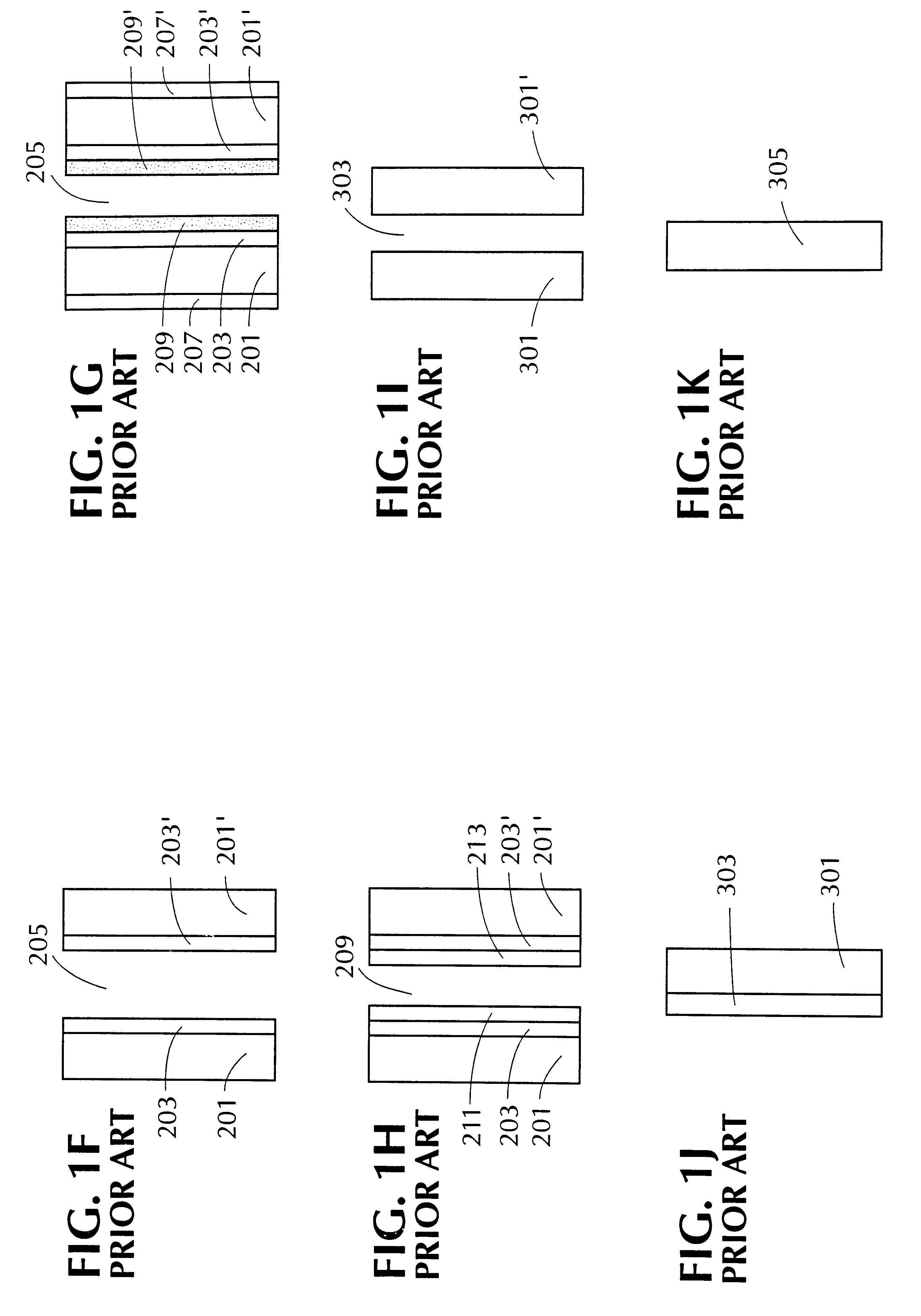Chromogenic window assembly construction and other chromogenic devices
a technology of chromogenic window and assembly, which is applied in the direction of static indicating devices, door/window protective devices, instruments, etc., can solve the problems of inconvenient installation, inconvenient installation, and insufficient space,
- Summary
- Abstract
- Description
- Claims
- Application Information
AI Technical Summary
Problems solved by technology
Method used
Image
Examples
second embodiment
FIG. 12 depicts still another embodiment of this invention. That embodiment is a skylight 401 suitable for architectural use. Here, a curved outer panel 421 and flat chromogenic panel 423 are held by frame 425 with a volume of air 427 therebetween. Frame 425 is itself attached to a roof or ceiling member 403. The volume 427 may be either vented or sealed in the manner previously discussed. Volume 427 is optionally sealed by a seal 429, such as a gasket or sealant. Seal 429 optionally contains a desiccant effective to prevent condensation of moisture from volume 427. The desiccant can be in any convenient place in any convenient form such as, for example, placed as porous blocks in recesses in frame 425, coated onto the interior surface of frame 425, formulated into the composition of the frame, or placed as powder in replaceable compartments about frame 425, effective to provide communication to volume 427 to prevent condensate formation from volume 427. The desiccant can be any con...
third embodiment
FIG. 13 depicts an architectural glass or plastic block constructed in accordance with the present invention. The glass block 1501 is formed with a flat panel chromogenic device 1503 located between opposing sides 1505a and 1505b, which are non-flat, of the block. This way, radiation passing through the block from one side to another can be attenuated.
Chromogenic device 1503 could be formed and controlled in the manner of any of the types of known chromogenic devices previously discussed, or even devices not currently known in the art. If appropriate to the type of chromogenic device, power leads 1507 or other control leads would pass through a small opening 1509 in the block and lead to the chromogenic device 1503, facilitating control of the optical properties of the block.
It will be appreciated that the block 1501 could be formed in a variety of ways, whether by molding to form a single glass block around the chromogenic device, laminating the chromogenic device between two separ...
fourth embodiment
Building glazing typically consists of multiple panel units such as dual pane insulated glass units ("IGU's"). Chromogenic elements such as electrochromic and / or photochromic elements could be incorporated into any of these panels. The outer panel could be tinted and / or be provided with a low-E coating, an ultraviolet barrier coating, a scratch-resistant coating, etc. Moreover, either a single film or multiple films could be used for this purpose. Single coatings or films could have multiple functionalities, such as of tint, low-E, ultraviolet barrier, etc. These coatings can be provided on either side of the outer panel, that is, either facing inwards or outwards, depending upon the nature of the materials and the functionality / purpose of the product. The coatings may be placed on both sides of the outer panel or even on the chromogenic panel side that faces the outer panel. For example, in and IGU it may be preferable if the inner face of the outer panel is coated with a low-E mat...
PUM
| Property | Measurement | Unit |
|---|---|---|
| temperature | aaaaa | aaaaa |
| area | aaaaa | aaaaa |
| length | aaaaa | aaaaa |
Abstract
Description
Claims
Application Information
 Login to View More
Login to View More - R&D
- Intellectual Property
- Life Sciences
- Materials
- Tech Scout
- Unparalleled Data Quality
- Higher Quality Content
- 60% Fewer Hallucinations
Browse by: Latest US Patents, China's latest patents, Technical Efficacy Thesaurus, Application Domain, Technology Topic, Popular Technical Reports.
© 2025 PatSnap. All rights reserved.Legal|Privacy policy|Modern Slavery Act Transparency Statement|Sitemap|About US| Contact US: help@patsnap.com



